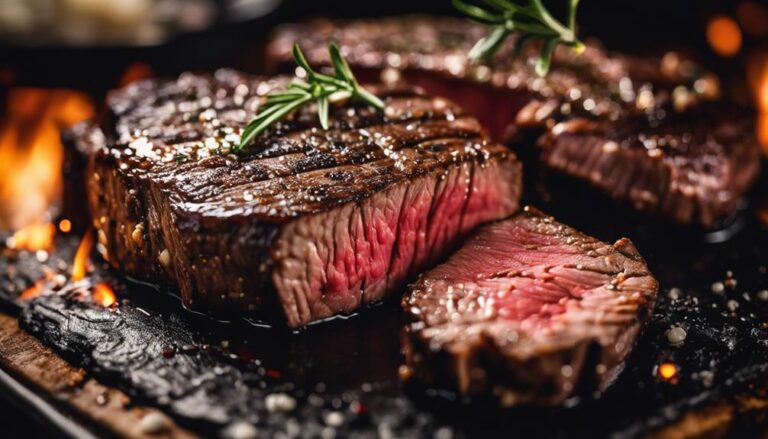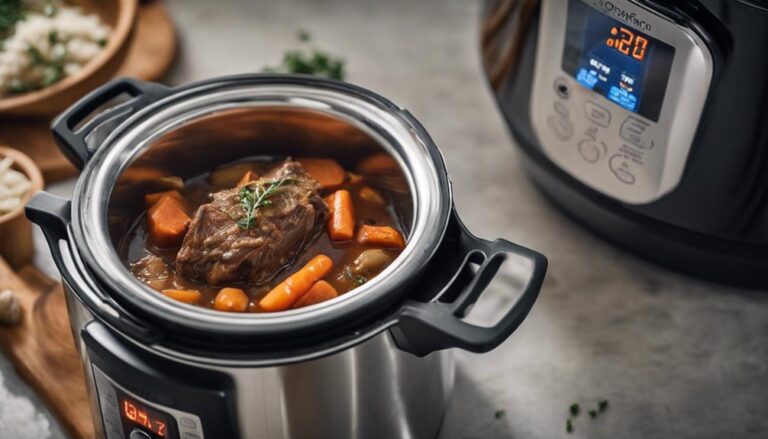What Makes Microwave Cooking Different From Sous Vide?
In microwave cooking, electromagnetic waves rapidly heat food unevenly, while sous vide uses precise water bath control for even cooking. Microwaves cook quickly at high temps, but sous vide maintains consistent low temps for best tenderness. Microwave meals are ready in minutes, but sous vide takes hours for superior flavor and texture. Microwaves may toughen meat, whereas sous vide enhances tenderness and retains flavors better. Microwaves need only a microwave, but sous vide requires specific equipment like a water bath and circulator. If you want to uncover more about these culinary methods' differences, keep exploring!
What You Will Learn Here
- Microwave cooking uses rapid electromagnetic waves for quick heating.
- Sous vide cooking involves precise temperature control in a water bath.
- Microwave cooking has shorter cooking times, while sous vide requires longer durations.
- Sous vide enhances tenderness and flavor retention better than microwave cooking.
- Microwave cooking may result in uneven heating and texture compared to sous vide.
Cooking Methods Overview
When comparing microwave cooking to sous vide, it's crucial to comprehend the fundamental differences in their cooking methods.
In microwave cooking, the rapid heating process utilizes electromagnetic waves to cook food quickly, often resulting in uneven heating patterns and possible hot spots. This approach is perfect for quick meals, but it may lead to nutrient loss and flavor changes due to the high heat levels involved.
On the other hand, sous vide cooking involves vacuum-sealing food and immersing it in a precisely controlled water bath for an extended period. This technique guarantees even cooking throughout the food, resulting in dishes that retain moisture, nutrients, and flavors.
The texture and tenderness of meat cooked using sous vide are often superior, with a moist and tender outcome, compared to potentially drier results with microwave cooking. While microwave cooking is known for its speed, sous vide cooking prioritizes maintaining the integrity of the protein and enhancing the overall dining experience.
Temperature Control Variances
Temperature control differences significantly differentiate microwave cooking from sous vide, impacting the consistency and quality of the final dishes.
In microwave cooking, electromagnetic waves rapidly heat food at high temperatures, leading to uneven cooking and potential dryness. Conversely, sous vide cooking utilizes precise temperature control in a water bath, maintaining a constant low temperature for an extended period. This controlled temperature environment allows for precise doneness, moisture preservation, and enhanced flavors, resulting in more consistent and tender outcomes compared to microwave cooking.
When it comes to protein cooking, sous vide excels in providing perfectly cooked meats without the risk of overcooking or undercooking, a challenge often faced with the less controlled heating methods of microwaving.
Cooking Time Variances
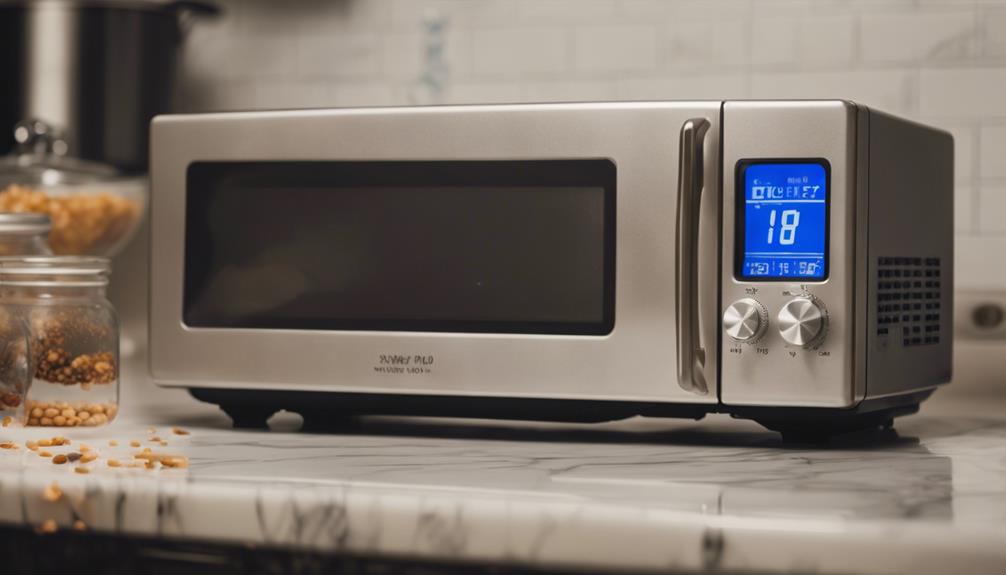
Considering the significant impact cooking times have on the final results, understanding the variances between microwave and sous vide methods is essential for achieving desired textures and flavors in your dishes.
- Microwave cooking: This method typically requires shorter cooking times, ranging from a few minutes to around 15 minutes, due to rapid heating, making it convenient for quick meal preparation.
- Sous vide cooking: In contrast, sous vide involves longer cooking times, spanning from 1 hour to several hours, allowing for precise temperature control and gradual cooking to develop unique textures and flavors in your food.
- Texture and tenderness: The quick cooking times in microwaves may result in different textures compared to the tenderizing effects of sous vide's longer cooking times.
- Flavor development: While microwaves excel in speed and convenience, sous vide is preferred for infusing flavors into meats and vegetables, enhancing the overall taste of your dishes.
Understanding these cooking time differences between microwave and sous vide methods is key to achieving the desired texture, tenderness, and flavor profile in your culinary creations.
Impact on Food Texture
To understand the impact of cooking methods on food texture, it's essential to compare the effects of microwave cooking and sous vide on the tenderness and structural integrity of meat.
Microwave cooking can result in higher cooking loss and more pronounced ultrastructural damage in meat, potentially leading to tougher textures compared to the enhanced tenderness achieved with sous vide. The myofibrillar protein surface hydrophobicity is significantly higher in microwave-cooked meat than in meat cooked via sous vide.
Sous vide cooking optimizes collagen solubilization and enhances water holding capacity, contributing to improved texture, which isn't typically achieved with microwave cooking. Despite the differing breakdown patterns, both microwave and sous vide methods alter protein structure and digestibility similarly in meat.
Understanding these nuances can help you choose the method that best suits your desired meat texture and overall dining experience.
Flavor Retention Differences
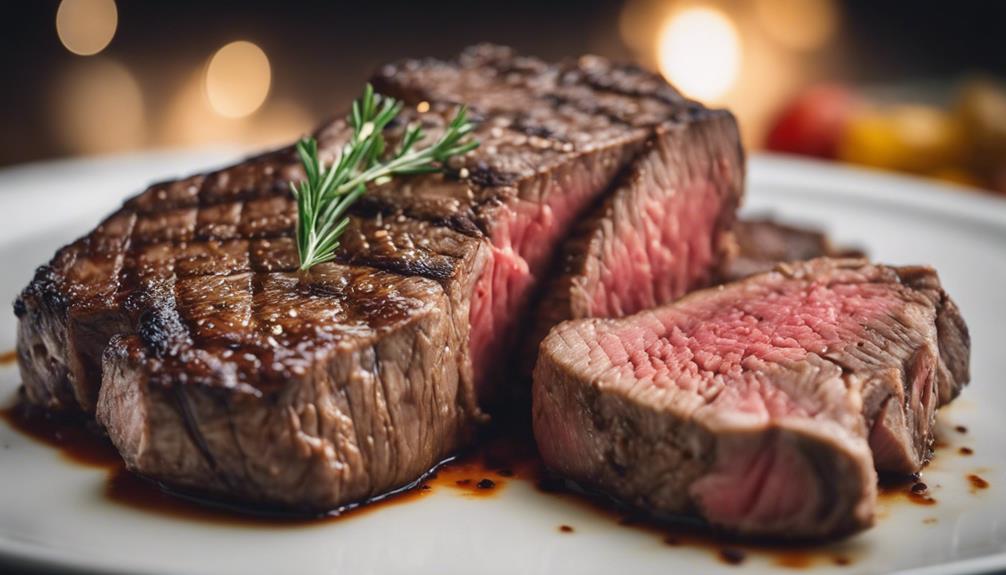
When comparing sous vide to microwave cooking, note the stark differences in flavor retention. Sous vide's controlled temperatures allow for deep flavor infusion, while rapid heating in the microwave may lead to flavor loss.
The way these methods affect flavor may have a substantial impact on the taste of your meals.
Retained Flavors in Sous Vide
Sous vide cooking stands out for its exceptional ability to preserve and enhance the natural flavors of meat, surpassing microwave cooking in flavor retention. Here's why:
- The vacuum-sealed bags in sous vide cooking help preserve juices and aromas within the meat.
- Low-temperature, long-duration cooking minimizes flavor loss through evaporation, enhancing flavor retention.
- The gentle cooking method of sous vide allows for the development and retention of complex flavors.
- The sealed environment intensifies and locks in the natural flavors of the meat during the cooking process.
Flavor Changes in Microwaving
As you shift focus to exploring flavor changes in microwaving, consider the distinct impact rapid heating and potential moisture loss have on the taste profile, contrasting with the flavor retention prowess of sous vide cooking. In the table below, you can see how these differences play out with regard to flavor changes between microwave cooking and sous vide:
| Aspect | Microwave Cooking | Sous Vide |
|---|---|---|
| Heating Method | Rapid heating using radiation | Gentle, low-temperature cooking |
| Moisture Retention | Potential moisture loss | Sealed bag retains juices |
| Flavor Development | May affect natural flavors | Enhances and preserves flavors |
Cooking Uniformity Variances
When comparing microwave cooking and sous vide, it's important to take into account the differences in heat distribution.
While microwaves can create uneven hot spots and cold spots, sous vide offers a consistent temperature throughout the cooking process, ensuring uniformity.
This variation impacts the texture and overall quality of the food you prepare.
Heat Distribution Differences
Microwave cooking's heat distribution often leads to uneven cooking and texture variations within dishes, contrasting with the precise consistency achieved through sous vide methods.
- Microwave Cooking:
- Utilizes electromagnetic waves for quick and uneven heat dispersion.
- Can result in potential hot spots and cold spots within the food.
- Sous Vide Cooking:
- Depends on accurate temperature control in a water bath.
- Guarantees even cooking from edge to edge, maintaining consistent texture, tenderness, and doneness.
The contrast in heat distribution methods significantly impacts the final quality, taste, and texture of the cooked food. While microwave cooking offers speed, sous vide provides unparalleled consistency in results, making it a preferred method for achieving uniform textures throughout dishes.
Texture Consistency Comparison
For achieving consistent texture throughout your dishes, comparing the texture uniformity between microwave cooking and sous vide is crucial.
Microwave cooking's quick heating process can lead to uneven texture consistency, with potential hot and cold spots in your food.
On the other hand, sous vide cooking guarantees a uniform texture by cooking at a precise temperature in a vacuum-sealed bag. The even distribution of heat in sous vide cooking ensures that your dish maintains its desired texture and doneness level consistently.
Unlike microwave cooking, which may cause overcooking or undercooking in localized areas, sous vide's gentle cooking method allows for precise texture development, resulting in a more tender outcome.
Choose sous vide for that perfect, uniform texture every time you serve a dish!
Equipment and Setup Variances
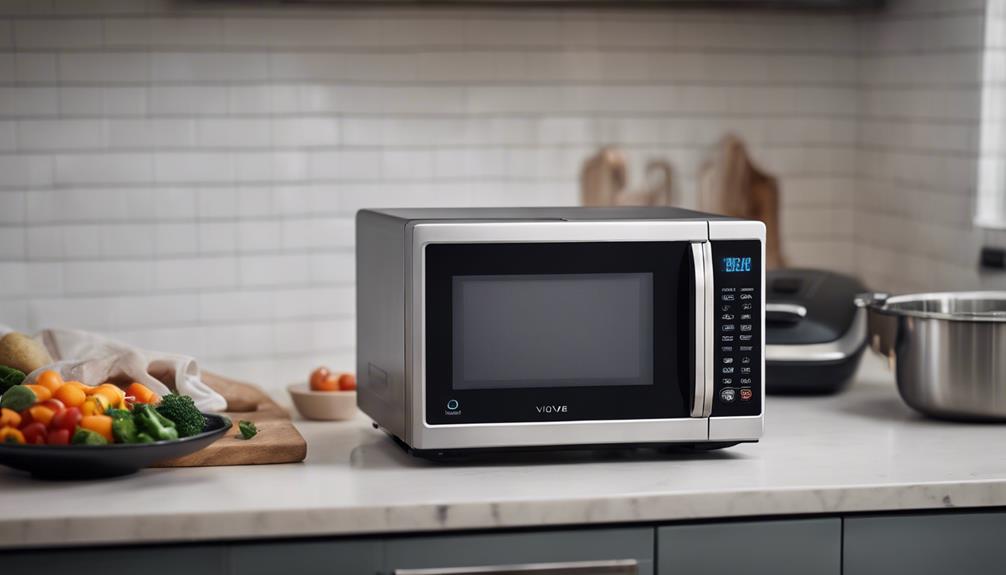
Utilizing different specialized equipment, microwave cooking and sous vide present distinctive setups for achieving ideal cooking results.
- Microwave Cooking:
- Requires a microwave oven that uses electromagnetic radiation for rapid cooking.
- Doesn't involve any special packaging, making it convenient for quick meals.
- Sous Vide Cooking:
- Involves a water bath and a thermal immersion circulator to maintain precise temperatures.
- Requires vacuum-sealed bags to cook food evenly over longer durations.
When considering equipment and setup variances, it's evident that microwave cooking offers a more straightforward approach with its quick and efficient cooking method using electromagnetic radiation.
On the other hand, sous vide cooking demands precise tools like a thermal immersion circulator and vacuum-sealed bags to achieve consistent results through controlled temperature cooking in a water bath.
Understanding these distinctions can guide you in choosing the right cooking method based on your time, precision, and convenience preferences.
Popular Culinary Applications
When exploring culinary applications, you'll discover a range of creative uses for both microwave and sous vide cooking techniques. Microwave cooking is ideal for those seeking rapid heating and quick cooking times. It's perfect for busy individuals who want their meals ready in a flash.
On the other hand, sous vide cooking, with its vacuum-sealing and precise temperature control, excels in flavor enhancement and nutrient retention. This method guarantees that your food retains its juices and nutrients, resulting in tender and flavorful dishes.
Microwave cooking shines when you need food fast, while sous vide offers a more controlled and gradual cooking process. Whether you're looking to whip up a quick snack or create a gourmet meal, both techniques have their place in the culinary world.
Microwave cooking is all about convenience and speed, while sous vide is about precision and flavor. So, depending on your needs and preferences, you can choose the method that best suits your culinary aspirations.
Frequently Asked Questions
What Is a Disadvantage of Sous Vide?
Sous vide cooking can be time-consuming, requiring longer cooking times than microwave cooking. This might not suit quick meal needs. The slow process is a drawback for those seeking rapid meal solutions, making it less convenient.
What Is so Special About Sous Vide Cooking?
When it comes to sous vide cooking, what makes it special is the ability to cook at precise temperatures, ensuring even cooking and retaining flavors. You get tender textures, consistent results with minimal effort, and professional-quality dishes every time.
Why Is It Better to Use Microwave in Cooking?
For quick and efficient cooking, the microwave shines. It excels in time efficiency, even heating, versatile recipes, easy cleanup, energy saving, no preheating, retains nutrients, budget friendly, consistent results, and space saving.
Why Do Chefs Like Sous Vide?
You love sous vide for its precision cooking, infusing flavors, and yielding juicy, tender results. It saves time, guarantees restaurant-quality dishes, and requires minimal effort. With even temperatures and consistent outcomes, you can create creative culinary masterpieces.
Conclusion
To sum up, microwave cooking and sous vide have distinct differences in temperature control, cooking time, food texture, flavor retention, cooking uniformity, and equipment setup.
While microwave cooking is quick and convenient, sous vide offers precise temperature control for perfectly cooked food.
Both methods have their own unique culinary applications, allowing chefs to experiment and create delicious dishes in different ways.
Ultimately, the choice between microwave cooking and sous vide depends on the desired outcome and cooking preferences.







